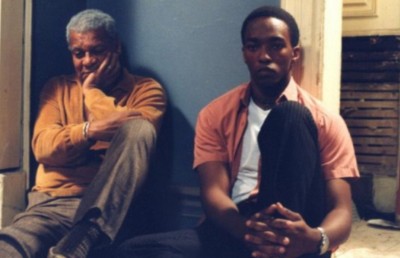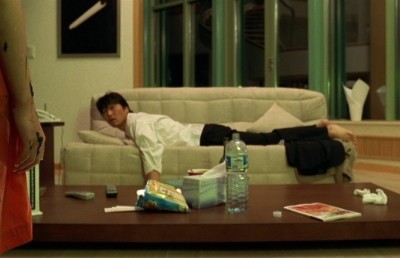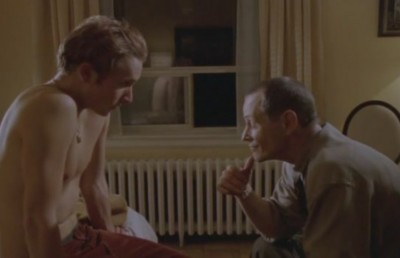Canadian Portraits: Three Forgotten Classics of the NFB
Discovering our Cinematic Heritage

The online magazine Hors Champ’s special film programming continues, this time in association with the National Film Board of Canada (NFB). Our intent is to discover, or re-watch, in a rare big screen event, three exceptional works from the history of the English program of theNational Film Board of Canada. These three documentaries, which adopt a “biographical” approach with their singular characters, present images of people who are at once ordinary and extraordinary, who through their tenacity and resilience are elevated to the status of myth.
Nahanni (1962), Flash William (1978) and The Sword of the Lord (1976) are little known in Quebec, and even though they made their mark as English Canadian documentary productions, they have, in some respect, been forgotten in the archives. It is for this reason, and because of their affinity, in theme and visual beauty, that we wanted to bring them together on the screen for one night. The films will be presented in their original English language version.
The Search
In Nahanni, Albert Faille, age 73, once again sets course along the fiery Nahanni river, in an effort to discover its legendary gold mine. Others before him have died in the search, at the foot of the cliff, in the tumultuous current, in the hostile splendour of this region in the Northwest Territories. The journey lasts weeks, and neither the imposing falls, nor the solitude weakens Albert Faille’s determination. During previous attempts, Faille had to turn back along his course at the first sign of autumn, or survive during the winter, without achieving his goal. The camera discretely follows Faille on his frail boat, capturing his manoeuvers along the rapids, moving to contrast his sparkling gaze with the grandeur of the landscape.
Flash William also takes place in the isolation of the north, a small village situated in a deserted section north of Alberta. After the closure of a coal mine, William « Flash » Shewchuck decides to undertake filmmaking. Director, cameraman, sound man, actor, editor, and projectionist; he learns all the tricks of the trade on his own, finds secondary actors and patiently involves himself in the production of his westerns. Charging a few pennies admission, he presents his films to the people of the village and plays harmonica before the screenings. Flash is
a « naive artist » of cinema. His films proceed with simple scripts which recall the cliches of the western genre. At the same time his films give evidence to an ingenuity and a remarkable resourcefulness, and display an assurred sense of framing and comprehension of montage. Even with his feeble resources, the technical difficulites, and the departure of an actress to the city, Flash William perseveres right to the end in order to complete his films.
Lastly, The Sword of the Lord, which features another fascinating character, the skier Jim Hunter, also deals with the theme of determination. Jim Hunter was nicknamed « Jungle » because of his zeal for training. Since Hunter was born on a farm in the West, where the flat plains spread as far as the eye can see, it didn’t seem likely . that he was destined to become a world skiing champion. But Jungle Jim is inspired by a deep religious faith. He trains more than anyone, by all methods, even during summer on the farm. A film crew accompanies him on the mountains of Europe, as a new season begins for the Canadian ski team. But the Swiss and the Austrians dominate, and while Jungle Jim avows himself to God’s design for either success or failure, he preoccupies himself continuously with any material detail which could be responsible for a subpar performance: the brand of his skis, the wax, the fabric of his suit …
A Documentary Approach
Straightaway, the three films distinguish themselves from the cinema verite tradition developed at the NFB, either English or French, which has inscribed that institute in the annals of film history books. With these films we are dealing rather with « composed » films, that include a written voice-over narration and demonstrate a classic mastery of cinematic language, while at the same time an uncommon inventiveness. It should also be noted that these filmmakers have honored their institutional mandate of « showing Canada to Canadians » in filming typical themes [the land, perseverence, « ordinary » people, noble failures…], while finding amazing subjects and realizing accomplished works.
The approach of these films is also very different from the documentary vogue of today, which often means shot
on video and borrowing from other aesthetic channels, destined to advance the exposition of a subject, an event, a social group, or the defense of a cause, rather than the development of an individual character.
Alas, we regret that we are unable to project these films on celluloid. The 16mm copies which we have been able to track down, either at the NFB or in other collections, give evidence to the passage of time in their color degredation.
Nevertheless, the theatrical projection of excellent betacam SP copies constitute a unique and privileged context for these works. The problem of films «turning pink » is a problem common to certain Kodak film stocks of the 1960s and 1970s. There is a shortage of resources, as well as a shortage of need, and little institutional will in the « digital age » to strike new copies of these films. We were also unable to
secure the presentation of versions subtitled in French. Such subtitled prints do not exist, and one of them exists in a dubbed version. In brief, these few words only serve to underscore the sad state of affairs for support of our cinematic heritage, and the lack of consideration of bilingual access for
important cultural works.














